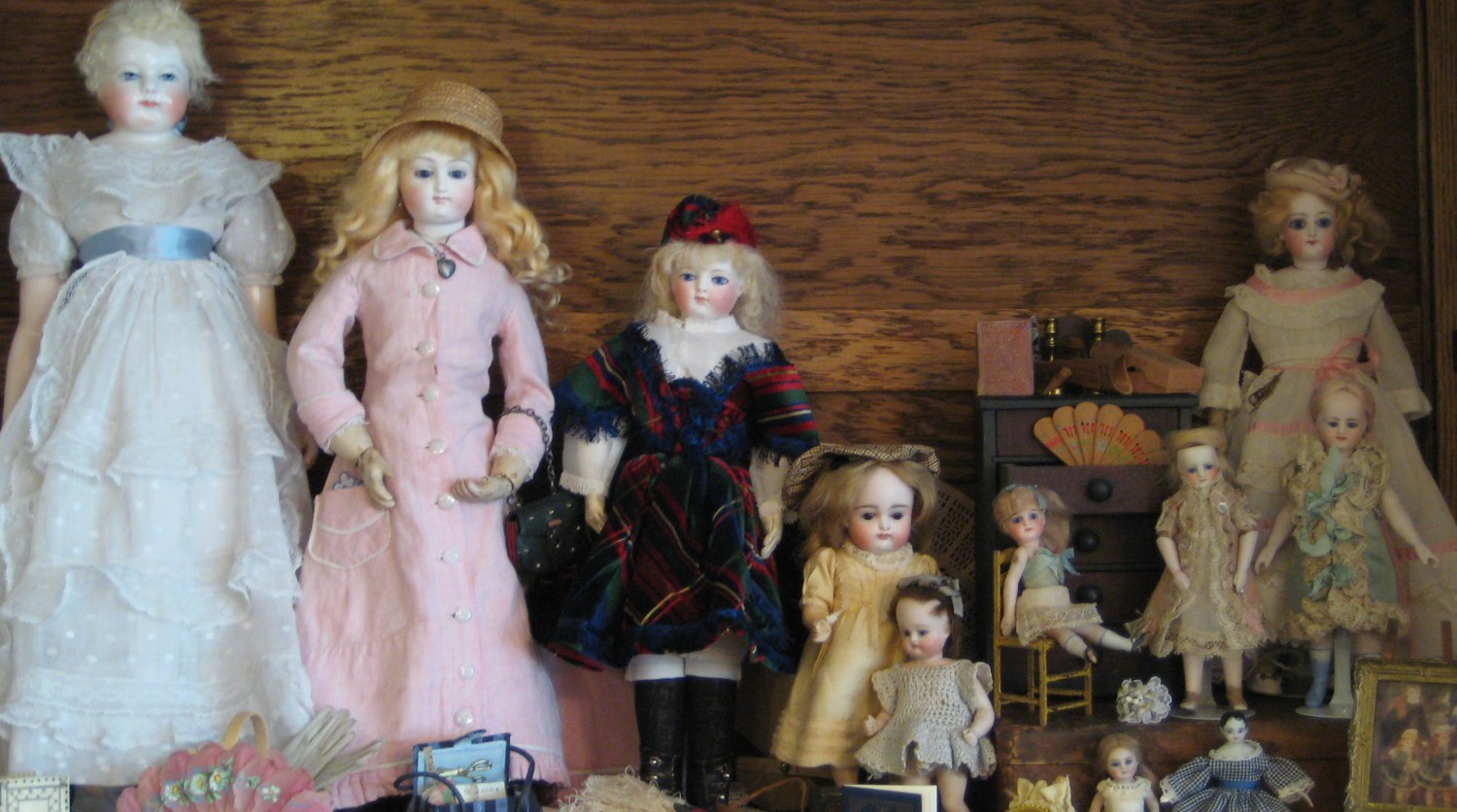I think the coolest thing about piping is that it looks impressive and finishes a garment beautifully but it is really easy to do.
I have chosen to make my Huret’s new skirt with a peaked waistband and corded piping cut on the bias. Since the skirt will be cartridge pleated, I must finish all sides of the waistband before it is sewn to the skirt.
The first step is to create the bias strip for the piping.

I folded the selvedge edge to meet the straight cut edge, creating a triangle.

Then I cut on a line 1/2″ from the folded edge

to make a 1″ strip.

Here’s what I need to make the waistband. I’m sorry, but I don’t remember where I got the cording, but it is okay to use crochet cotton (it comes in different thicknesses). I modified a pattern from Theimer’s La Poupee Modele for the waistband. The lining is cut from muslin because I wanted it to be heavy enough to support the waistband.

To insert the piping, fold the bias strip in half and snug the piping up to the fold. Take basting stitches through both layers as close as possible to the cord.

I am using a 1/4″ seam allowance, so I trimmed the piping strip to 1/4″.

I want one edge of the waistband to be finished with the piping, so I lined up the edge of the piping strip with the edge of the waistband and stitched close to the piping. To go around the corner, I snipped the seam allowance on the piping.

Since the other end of the waistband won’t have piping, I finish stitching along the top edge. I opened up the strip and trimmed off 1/4″ of the piping for ease in finishing this end.

This is what it looks like when the stitching is done. If I was not lining it, I’d just fold back the seam allowance and the piping would lie at the top.

To line the waistband, I placed the lining piece over this piece and stitched it again, up close to the piping. I could keep stitching along the bottom, leaving a small opening to turn the piece, but I left it open.

Before turning, I trimmed the points and cut a wedge from the inside corners. Then I graded the seam: I trimmed each layer to a different height to cut down on bulk.

I chose to leave the bottom open so that it would be easier to make sure the piping corners are perfect, so here’s how it looks when it’s turned.

After turning under the bottom edges and slip stitching them, the waistband is finished and ready to be sewn to the skirt.

Here’s how it looks on the inside.
Piping can be used, either corded or flat, in just about any seam on a garment.
As you can see, piping is easy, just a bit time consuming. But I think the finished edge is worth the trouble.

